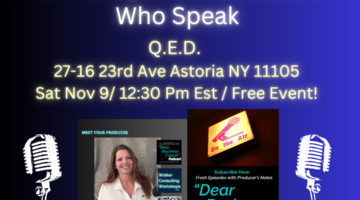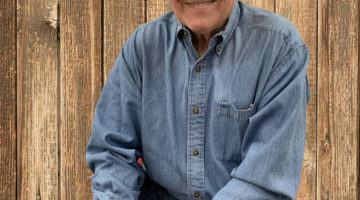To Judy and Alex Rauzman for taking a ten year old to see real movies.
The last time I saw John McClane on the big screen I was in high school and both he and I exhibited far fewer fine lines and each had better scalp coverage. It is interesting that over the course of the past year, with the exception of family outings to Happy Feet, Shrek the Third, and Ratatouille, I have ventured out only twice, on my own, late at night, to the movies. Both times it was as if compelled by a sudden primal instinct. I was at home one minute annoying my wife and cat with no plans of any kind other than to continue annoying people and animals, and the next minute I was announcing, “I’m going to the movies,” and reaching for the car keys. The first instance was to see Rocky Balboa and the second was the other night with Live Free or Die Hard.
The connection between the two is rather obvious. Both Balboa and McClane represent something significant to aging Generation Y-ers. Rocky IV, the most bombastic of the series, came out when we were too young to realize that it was an overblown, cheesy, stereotype laden display of Cold War propaganda. We just sat in awe of Stallone’s rippling physique and our hearts flew out of our chests as he pounded Ivan “I must break you” Drago into submission. After all, Rocky was the underdog. He trained by pulling Pauly on a sled while Drago had sophisticated equipment and steroids. Also Drago deserved to get beaten after having murdered Apollo….in the ring…during an exhibition match! Even the Gorbachev look-alike was cheering for Rocky by the end.
significant to aging Generation Y-ers. Rocky IV, the most bombastic of the series, came out when we were too young to realize that it was an overblown, cheesy, stereotype laden display of Cold War propaganda. We just sat in awe of Stallone’s rippling physique and our hearts flew out of our chests as he pounded Ivan “I must break you” Drago into submission. After all, Rocky was the underdog. He trained by pulling Pauly on a sled while Drago had sophisticated equipment and steroids. Also Drago deserved to get beaten after having murdered Apollo….in the ring…during an exhibition match! Even the Gorbachev look-alike was cheering for Rocky by the end.
Okay, so maybe Rocky (the real Rocky) comes slightly before my time, but the point remains. That character, like McClane, was young and vibrant and full of life and bigger than life when I first encountered him. When I was ten – when any of us are ten – the world pulses with incredible amounts of kinetic energy, enough to supercharge our vast propensity to wonder and imagine. And if you are a ten year old boy, as I was, one wonders and imagines in the language of action, adventure, excitement, and heroics.
Some people like to talk about their children being born and first kisses. Those moments are terrific. I was ten years old, in a dark, sprawling theatre that felt like it could have been the Coliseum, and the room darkened, and the studio identified itself, and then smirky, reliable John McClane was on a plane being told to make fists with his toes. Two hours later Hans was dead, Holly saved, Ellis sacrificed, Al resurrected, Nakatomi plaza rocked to its core, and the modern day action film was born.
I’m not going to take apart Entertainment Weekly’s recent preposterous list of the top 25 action films of all time (No Under Siege or Cliffhanger, but yes Saving Private Ryan – great work guys!). Needless to say they got number one right. John McTiernan’s Die Hard was and is everything a popcorn action blockbuster is supposed to be. McClane is the resilient, clever everyman with a boatload of guts, a snappy mastery of expletives, and a ridiculous amount of luck. McClane never met a bullet, missile, or fireball that he couldn’t dive away from to relative safety. By the end he is a bloody, limping mess, but you can’t wipe that smile off his face or knock that dangling cigarette from his lips.
As you know from being dedicated readers of this website, Die Hard With a Vengeance was deemed the worst film of 1995. The third installment in the series was filmed in McClane’s hometown of NYC, partnered him with a then omnipresent Samuel L. Jackson, did not involve saving his wife (sweet, sexy Bonnie Bedelia as Holly), and had the bad guys gunning specifically for McClane because the lead villain (Jeremy Irons) was Hans Gruber’s brother.
These four elements of the film will be used in our analysis of the latest (and presumably last) entry in the franchise because sometimes the best way to tell if something was done right is by explaining how to do it wrong and abstracting the remainder.
 In the universe that is Die Hard, John McClane does not kick ass in New York City. He is an outsider, a cop acting without jurisdiction, a thorn in the side of local law enforcement, upstaging them at every turn. His New York slickness and arrogance resonates in contrast to the yokels trying to figure things out around him. He is miles ahead. The beauty of his struggle is that he is fighting the bad guys as well as the bureaucracy of police officials. Die Hard 3 got this wrong and transferred the action to the five boroughs where all the cops were familiar with McClane and his style. That ingredient alone erases thirty percent of the fun.
In the universe that is Die Hard, John McClane does not kick ass in New York City. He is an outsider, a cop acting without jurisdiction, a thorn in the side of local law enforcement, upstaging them at every turn. His New York slickness and arrogance resonates in contrast to the yokels trying to figure things out around him. He is miles ahead. The beauty of his struggle is that he is fighting the bad guys as well as the bureaucracy of police officials. Die Hard 3 got this wrong and transferred the action to the five boroughs where all the cops were familiar with McClane and his style. That ingredient alone erases thirty percent of the fun.
John McClane does not work with a partner. While Al in the original film was John’s (or Roy’s) sounding board, confidant, and lone supporter, he was on the ground praying for the best (and eating Twinkies) while John was taking care of himself and the business of eliminating Euro-terrorists one by one. McClane does not want anyone’s help and he sure as hell does not need anyone’s help. The whole point is that he is alone. Fighting against impossible odds with no one to rely on but himself, his strength, his wits. McClane’s resolve and determination (and luck) save the day, and flying solo allows him to have snarky conversations with himself. Once he is given a partner; once McClane becomes a grumbling babysitter (to someone who inevitably helps out when least expected), the film loses its authentic Die Hard flavor – McClane (and McClane alone) against the world. Also, by having a set of ears around the whole time, we lose the internal dialogue which accounts for fifteen percent of the fun.
John McClane loves Holly. Holly is his everything. Yes, they had some marital trouble and she dropped his last name calling herself Gennero when we meet her in Die Hard, but forget that. In the end, the bottom line is these two are basheirt. When Holly is in grave danger, which incidentally is the case in the first two films, McClane is motivated to commit superhuman acts to rescue her from harm. He takes unnatural risks and chances that no cop would ever take under normal, even dire circumstances. We understand the bizarre relentlessness; the suicidal pursuit of the bad guys because they messed with Holly. And nobody messes with Holly McClane while John walks the earth.
I don’t know if it was salary related or otherwise but Bedelia is not in Die Hard 3, thereby removing from the film John’s primary motivation to go ballistic. According to the film the two were separated, which is a lame excuse for being too lazy to write an actual Die Hard script (the script for Die Hard 3 was simply an action script floating around Hollywood called “Simon Says” and it was co-opted and converted into a McClane movie). Holly and John were clearly meant to be together and by separating them not only does the film expose itself as amateur and produced by parties unfamiliar with the series, but it irreparably taints the first two films as we must retroactively reflect that John and Holly don’t make it in the end. Without Holly’s safety at issue, the credibility of John McClane’s absurd courage is destroyed, and with it another twenty two percent of the fun.
Finally, the villain in a Die Hard movie does not see McClane coming. John is a monkey wrench thrown into the perfectly planned and executed crime. Tossed in by fate. Destiny places McClane at the wrong place at the wrong time (or the right place at the right time depending on how you see things). This is what makes him a “reluctant hero.” He is not supposed to be involved and yet he is forced to against his will. The chaos first happens around him, not to him.
The brilliant team behind Die Hard 3 decided to have the lead villain targeting McClane, hunting him like a rat all the while perpetrating some gold bullion heist. So we don’t get to enjoy watching a temperamental, pragmatic, nefarious mastermind slowly realize that his diabolical scheme is being foiled by some renegade nobody. We don’t get to see the sweat begin to glisten at his temples or the look of devastation and wonderment as a single human being terminates trusted henchman after henchman. We aren’t permitted to gleefully observe the expression of How is this happening? Who is this cowboy? Losing that element of surprise for the bad guys and our ability to witness their slow burning shock suctions out thirty three percent of the fun.
By my calculations, Die Hard With a Vengeance was no fun at all.
Live Free or Die Hard is a good time at the movies though it pales in comparison to the first two films (admitting that the bar was set exceptionally high). The reason the film succeeds is because it brings it back to basics somewhat and gets a number of the elements discussed above right.
The action takes place in New Jersey, Maryland, Washington D.C., and West Virginia – a bit too expansive for the claustrophobic Die Hard formula, but at least it steers clear of New York. On the same note, the terror plot in the film is on a huge, national scale – grander than necessary. Regardless, fifteen percent of the fun is back.
McClane is given a partner. Presumably it is because the last film was released twelve years ago and the studio worried that young people would not be familiar with the franchise. Therefore popular and likable young star Justin Long was added into the mix as a computer hacker with the skills and knowledge to stop cyber-terrorists. Long may be the poor man’s Shia Labeouf, yet both actors always contribute nicely to their projects. The film feels a little big for Long who has primarily done comedies, but the fit isn’t bad. Of course it would have been better and more appropriate for John to go it alone, but at his age, a sidekick passes the smell test. Seven percent of the fun returns.
Holly and John are now divorced. It’s inconceivable, I know, but maybe Bonnie Bedelia is a tough negotiator or something. McClane explains to Long a number of times that he steps it up and throws himself headlong into danger because he has to – if not him, no one would do it. Pirkie Avos covers a similar theme…but we know that is not really how McClane thinks. He essentially wants to be left to himself – that is unless you mess with Holly. In this film some motivation for John is provided by the capturing of his daughter – now a cute college coed – which thankfully brings things back home. It is personal again. And you will need to suspend some belief because toward the end of the film – as John tries to get his daughter back – the staged action goes from over the top out into orbit. But come on, as we all know, if a McClane who goes by the name Gennero (as his daughter does) gets messed with, expect the unexpected. Welcome back to fun in the amount of seventeen percent.
No one can match Alan Rickman as he defined suave, soulless greed and evil as Gruber in Die Hard. Timothy Olyphant, as Thomas Gabriel, is a disgraced government advisor trying to send society back into the stone age by infiltrating and wrecking our computerized infrastructure (and he succeeds in his mission to a disturbing extent). He ably provides a rival to McClane. Through a plethora of conscience-free slayings and destruction, he has McClane revved up and steamed, calibrated just the way we like him. The second tier “warrior” villains are also memorable including a hot ninja in a business suit and one who practices parkour (the lightning fast climbing, jumping, and flipping technique last seen in the opening of Casino Royale). Best of all though is that Gabriel is constantly amazed and disturbed by the fly in his ointment. Pesky, durable John McClane manages to show up everywhere and anywhere a key criminal exercise is taking place. Gabriel’s frustration is our pleasure. Pleasure to the tune of twenty five percent.
As a bonus I’m going to throw in ten percentage points for nostalgia and another ten for spectacular action sequences.
So where are we now?
Hmmm…carry the two….okay – we’re at eighty four percent. A huge jump from the zero the last film racked up.
If we can be comfortable with the fact films are simply no longer made as the first two were and if we can come to grips with, that like John McClane, we too are getting older, Live Free or Die Hard is a satisfying, perhaps even moving film event. The kind worth seeing on a whim in the middle of the night.









